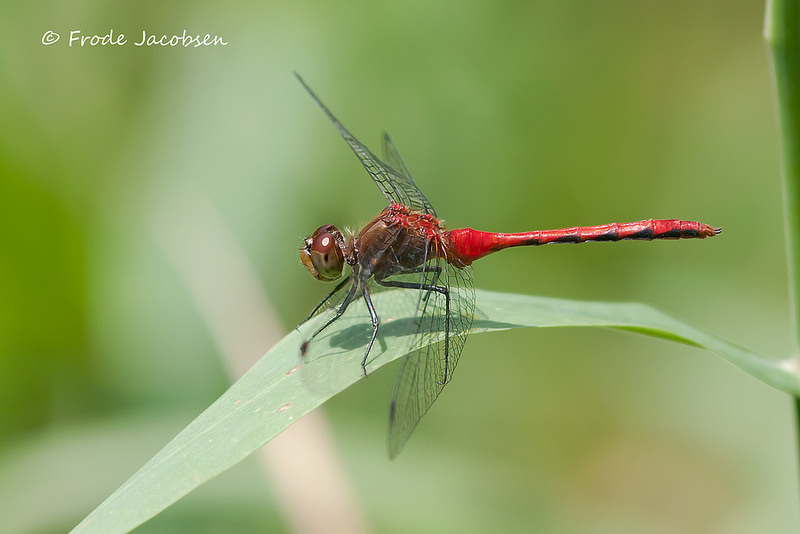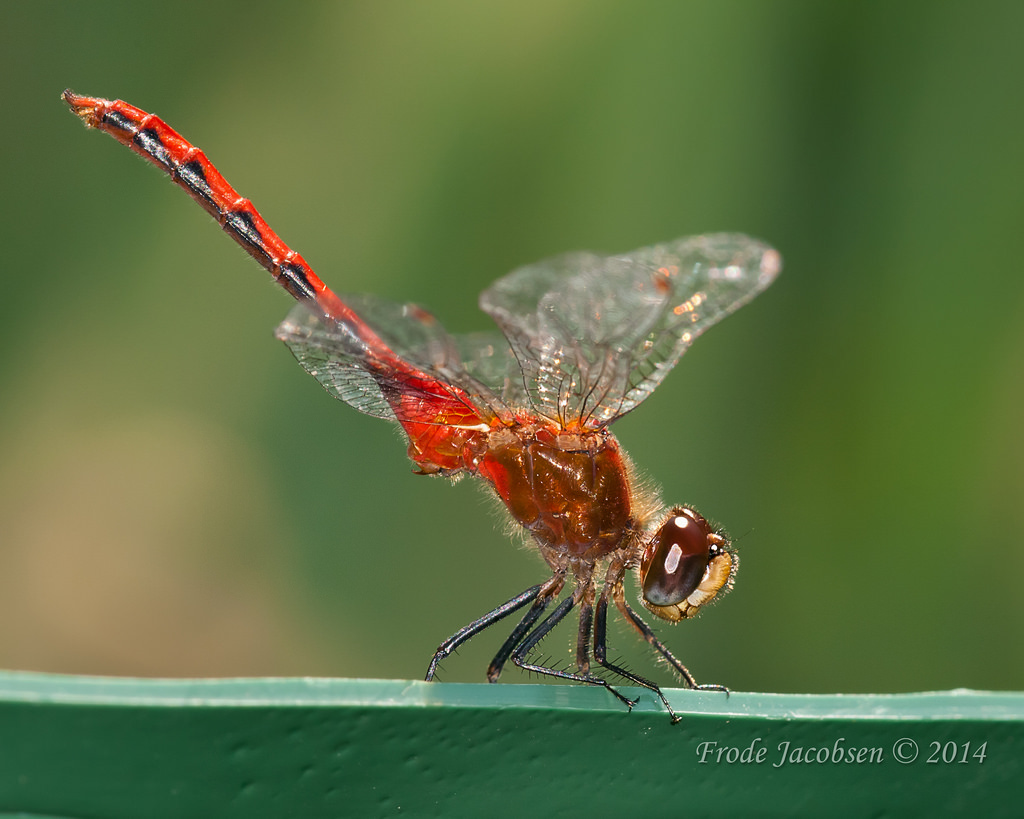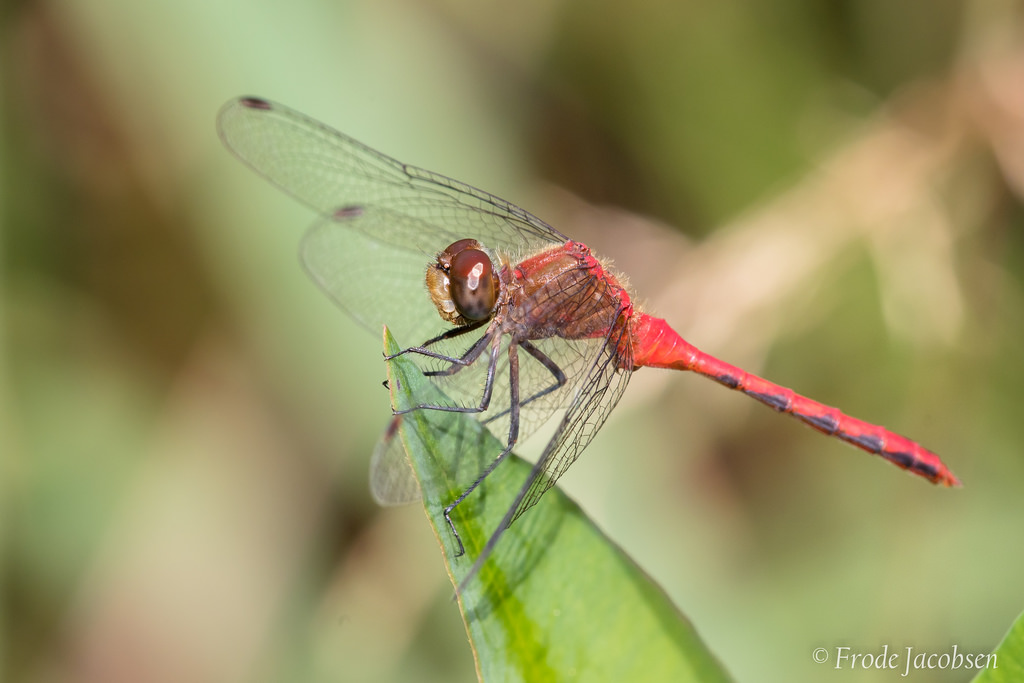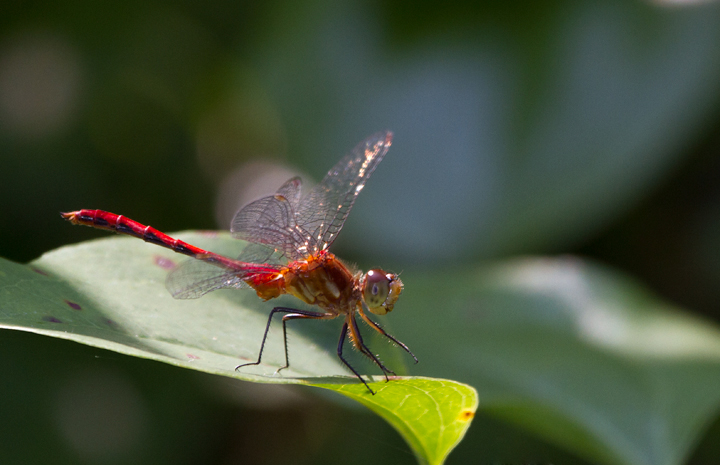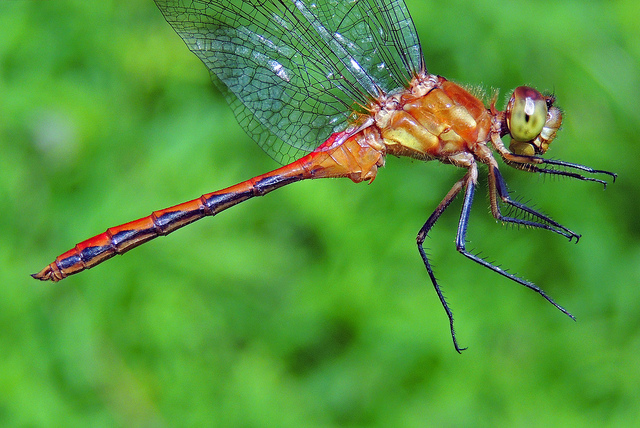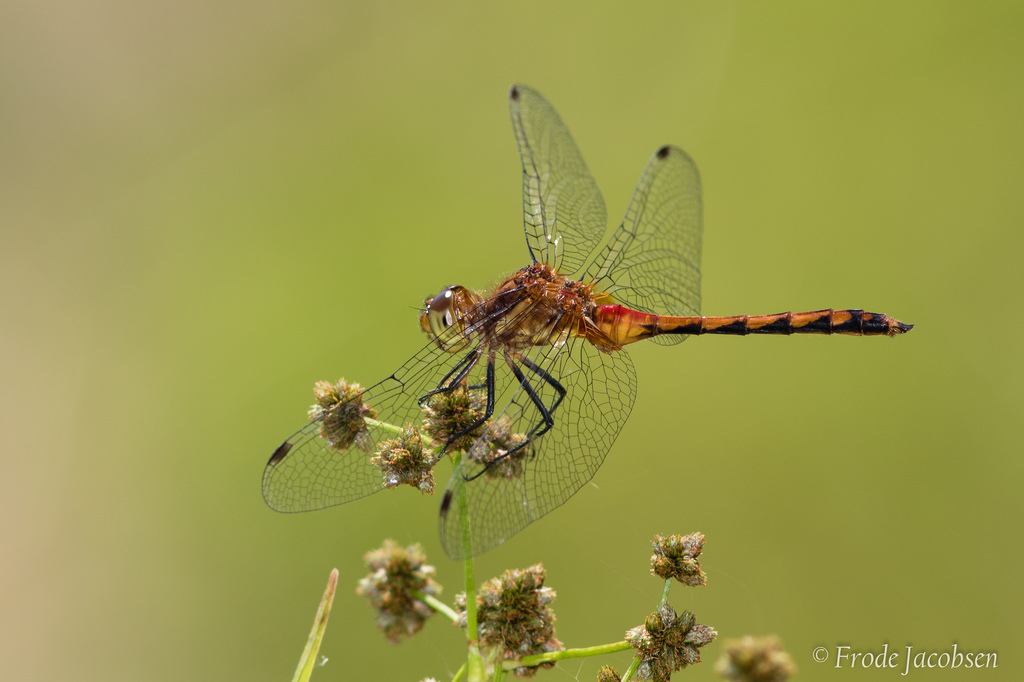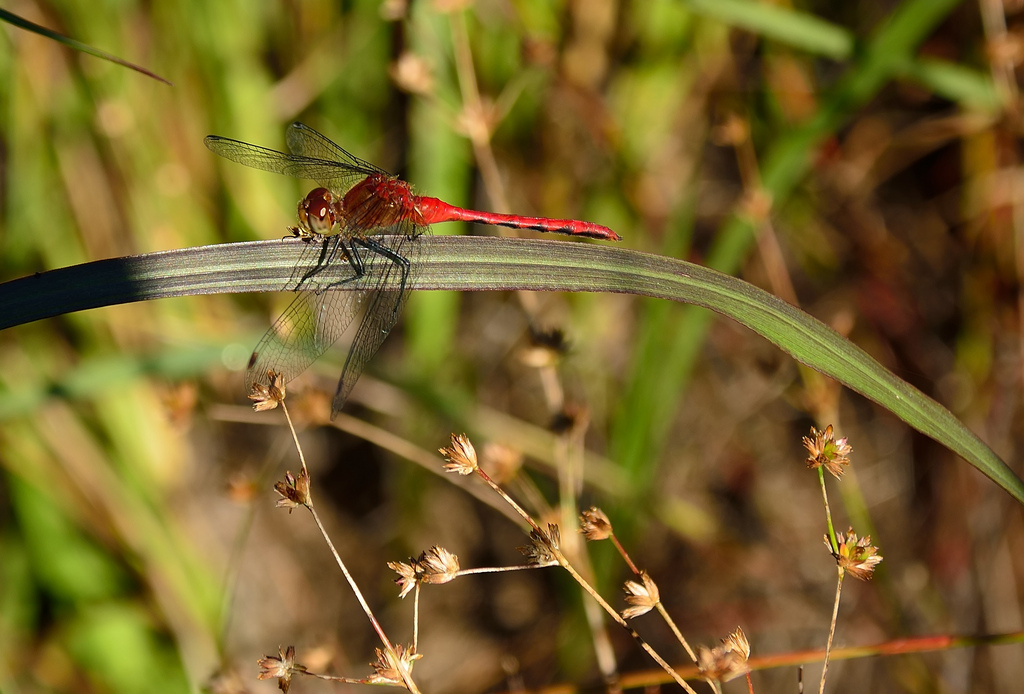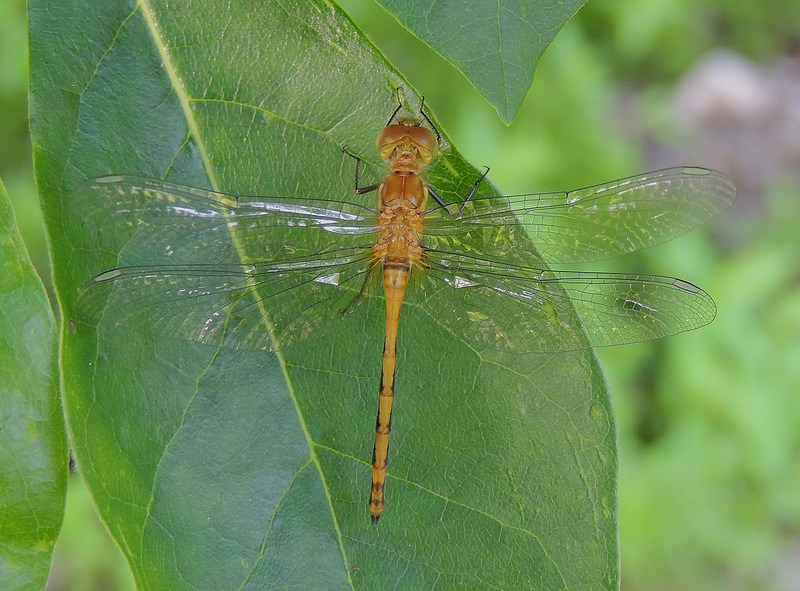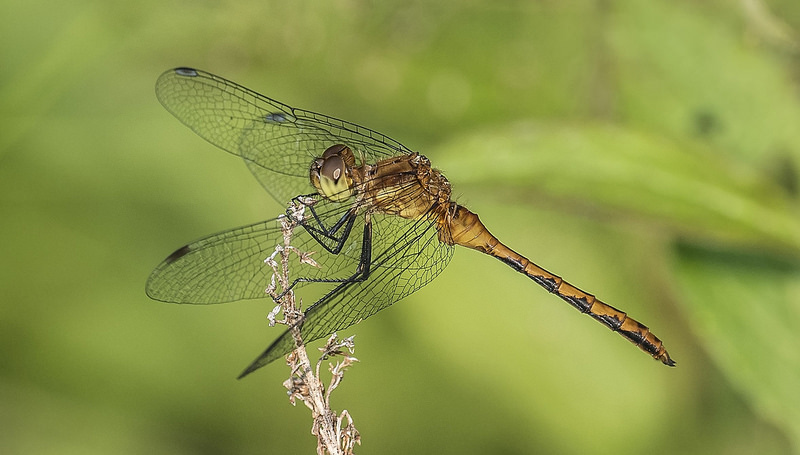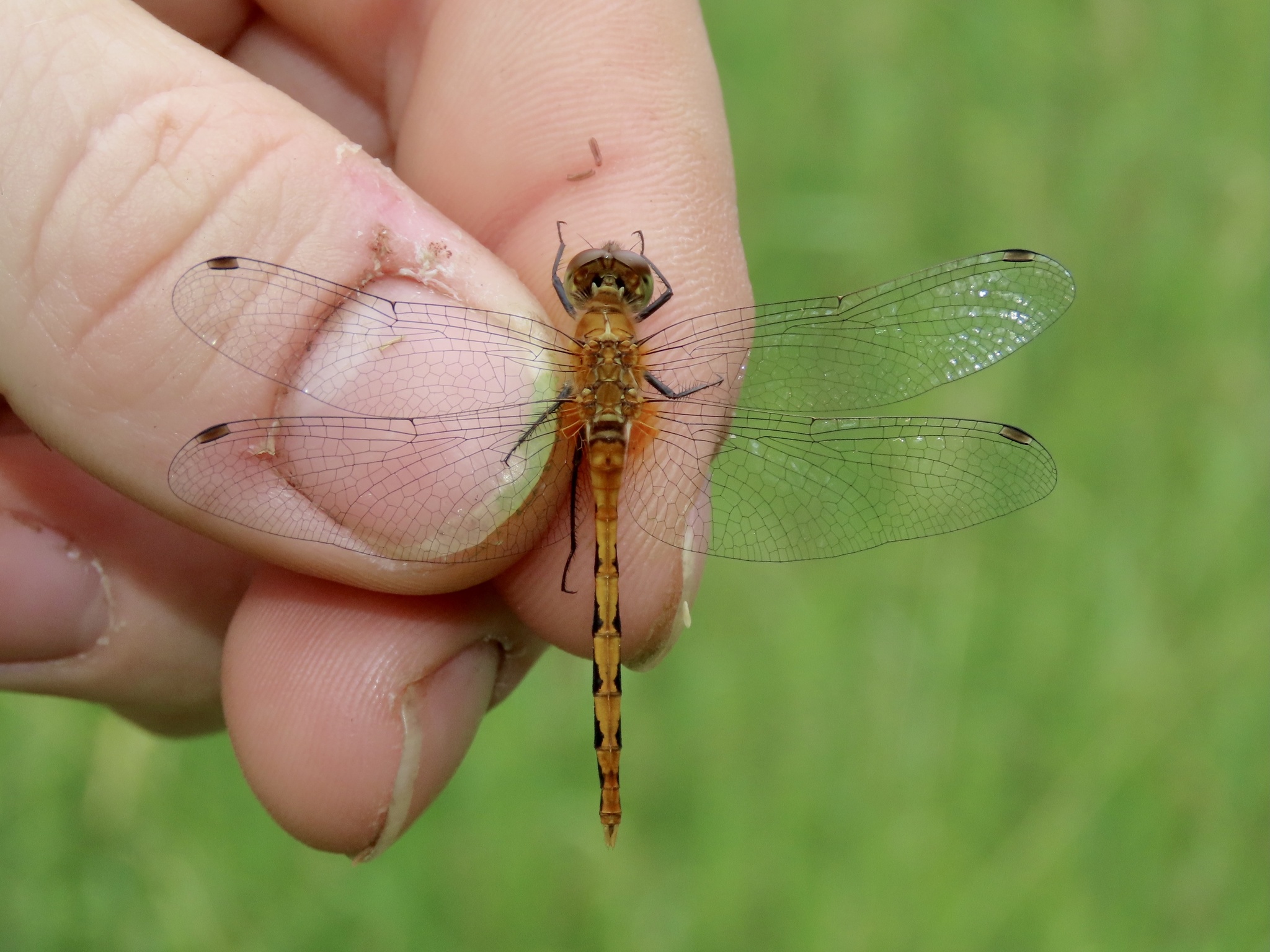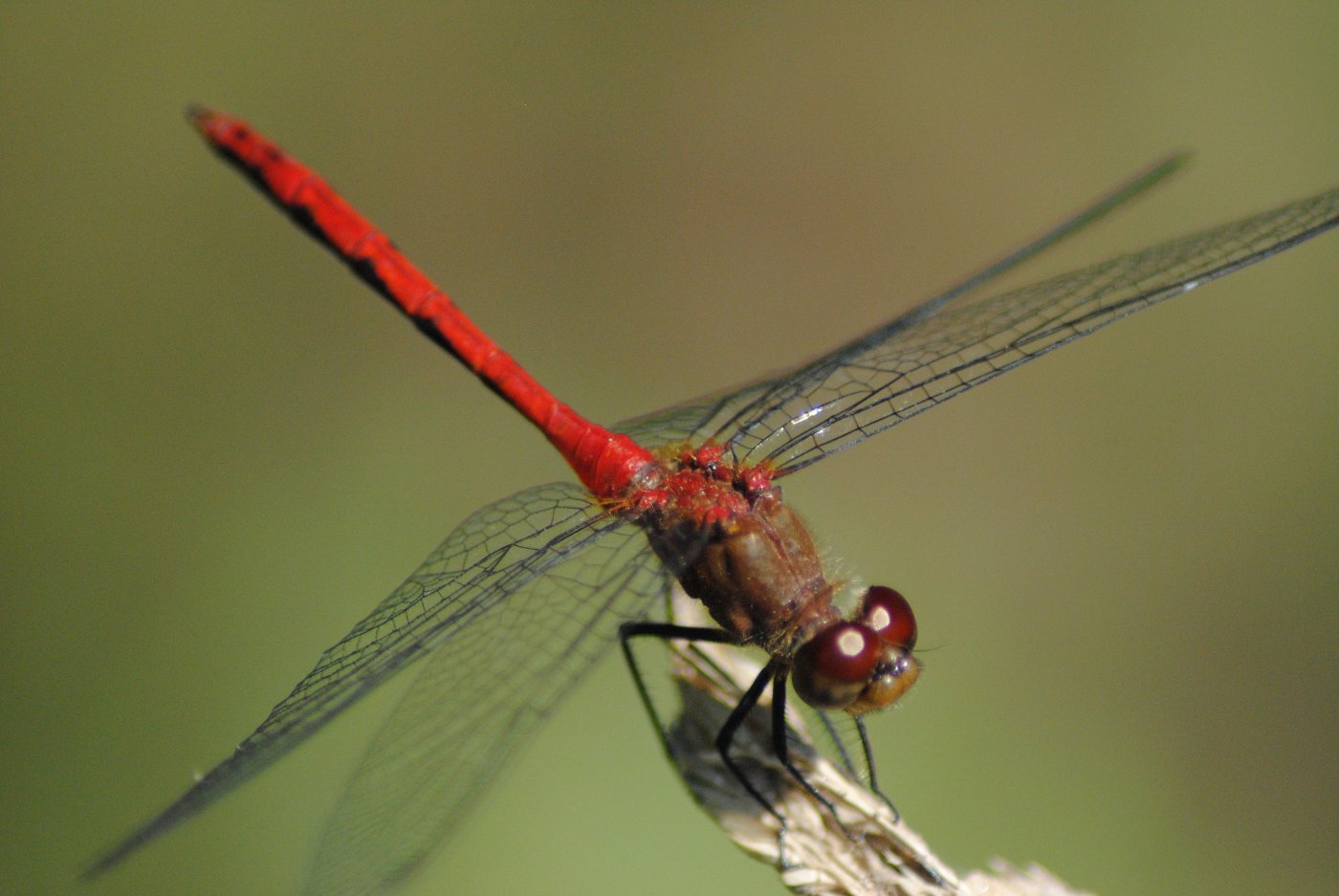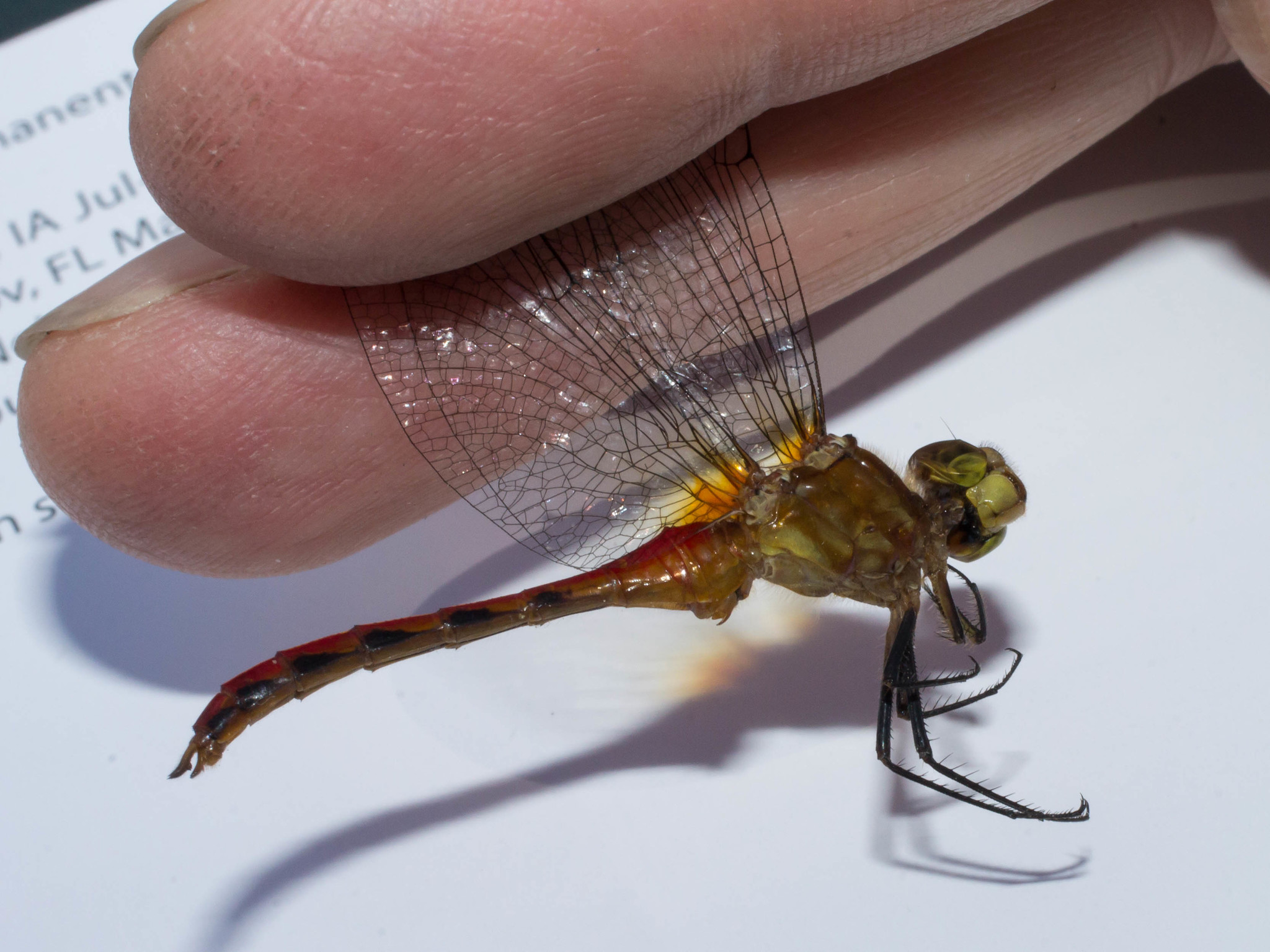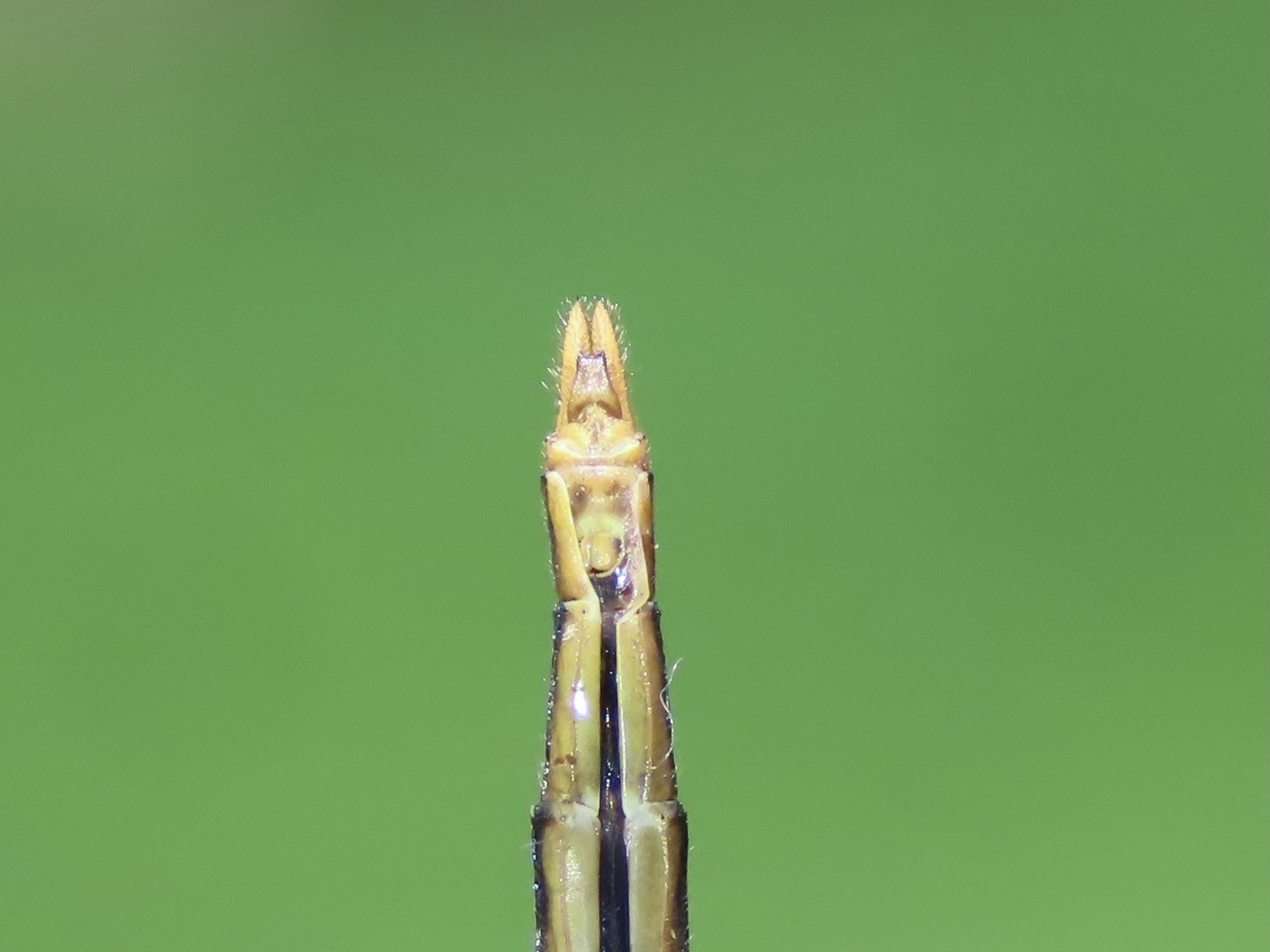Map Snapshot














296 Records
Status
Ruby Meadowhawk (Sympetrum rubicundulum) is a member of a very difficult complex of similar meadowhawk species (with Cherry-faced Meadowhawk and White-faced Meadowhawk) showing black legs and with lateral black triangular abdominal markings. Mature males, and older females show a crimson color to the abdomen. Hamule shape of the males, or subgenital plate shape on females, is one of the more reliable ways to distinguish the species. There is growing evidence that Ruby Meadowhawk hybridizes with White-faced and Cherry-faced Meadowhawks (including "Jane's") in portions of the east, and intermediates with ambiguous hamule shape are sometimes found. Northeastern populations with subtly different hamule shape and tan faces are called "Jane's Meadowhawk" (Sympetrum janae) by some odonatologists, but it is widely held these are an eastern form of internum, or represent character introgression or hybridization with rubicundulum. The situation is complex, and has not been resolved (Paulson, 2011). This species is found across most of Maryland, but is absent from the southernmost western shore, and much of the eastern shore coastal plain (Richard Orr's The Dragonflies and Damselflies of Maryland and the District of Columbia).
Seasonality Snapshot
Source: Wikipedia
| Sympetrum rubicundulum | |
|---|---|

| |
| Mating pair in wheel position,[1] male on top | |
| Scientific classification | |
| Domain: | Eukaryota |
| Kingdom: | Animalia |
| Phylum: | Arthropoda |
| Class: | Insecta |
| Order: | Odonata |
| Infraorder: | Anisoptera |
| Family: | Libellulidae |
| Genus: | Sympetrum |
| Species: | S. rubicundulum
|
| Binomial name | |
| Sympetrum rubicundulum (Say, 1839)
| |
Sympetrum rubicundulum, commonly known as the ruby meadowhawk, is a species of dragonfly of the family Libellulidae. It is found in northern United States and southern Ontario, Canada. Adult males are identifiable by a distinctive orange to brown face and red bodies. Females faces have same colours as males; bodies are brown to dark-red.[1]
Similar species
[edit]- Sympetrum internum – cherry-faced meadowhawk
- Sympetrum obtrusum – white-faced meadowhawk
- Sympetrum costiferum - saffron-winged meadowhawk
References
[edit]- ^ a b Dunkle, S.W. (2000). Dragonflies through Binoculars: A Field Guide to Dragonflies of North America. New York: Oxford University Press. p. 200. ISBN 0-19-511268-7.
- ^ Paulson, D.R. (2017). "Sympetrum rubicundulum". IUCN Red List of Threatened Species. 2017: e.T51291893A65836614. doi:10.2305/IUCN.UK.2017-3.RLTS.T51291893A65836614.en. Retrieved 26 July 2023.
External links
[edit]- Species Sympetrum rubicundulum - Ruby Meadowhawk, BugGuide.Net
